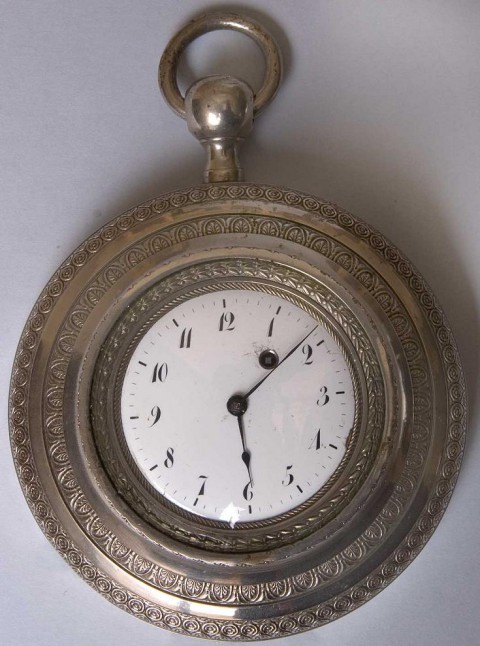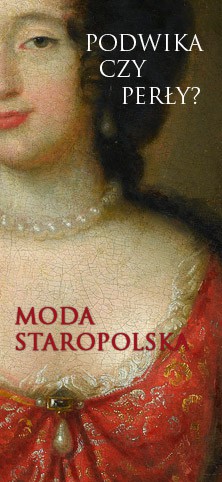Wall clock
karta katalogowa kolekcji
Rzemiosło artystyczne
Poland (?)
18th-19th century
Brass, steel, white painted enamel, white metal, glass
Ø 10.5 x 4 cm
Wil.2450
The shape of this clock was probably designed in response to the needs of its owner, who led an active life, full of meetings; since he travelled by carriage, he required an indispensable clock resilient to all changes of position and shock-proof. The mechanism of a pocket watch was redesigned according to special directives, changing the escapement with a fly-wheel under a bridge to a barrel bridge with a cylinder escapement, a single-metal fly-wheel, a flat hair-spring and a simple regulating device (which sounds very complicated to people uninitiated into the mysteries of the relations between cog wheels and the measurement of time). The dial-plate and the clock mechanism were granted, instead of a case, a wide frame with delicate Empire decorations, outfitted with a piece of glass and a suspension spring with a ring. Placed on a carriage or study wall the clock showed minutes and hours. Was it really shock-proof? Probably not. Its owner might have considered it very precious since he granted it an honorary place on his study wall.
Anna Kwiatkowska
Polecane

“Mirror” standing clock
This clock is one of a pair of standing clocks in a case decorated with mirrors, a set unique on …

The clock from the London exhibition of 1851 and other Paris clocks of August Potocki at Wilanów
Studia Wilanowskie, 1989 r. T. XI While carrying through his building projects August Potocki took equal care of appropriate furnishing of …

Pulpit
The shape of the pulpit is that of a small easel, which could serve an artist painting miniatures or small …

















